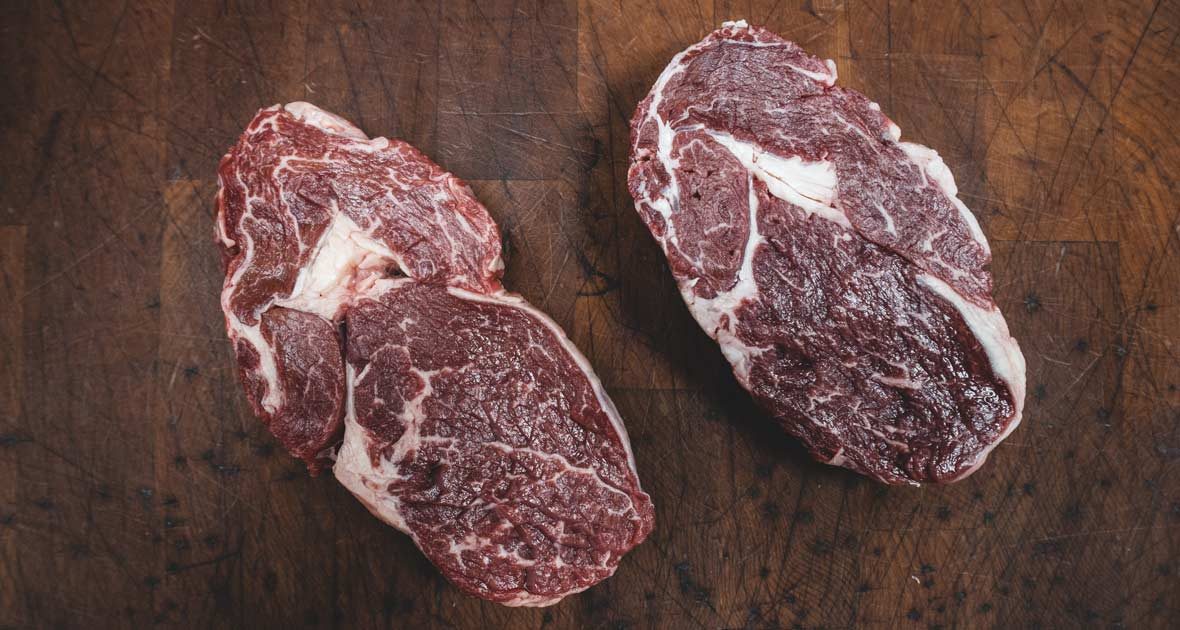MEAT CUT OF THE WEEK
Every week, our butchers break down 5 animals– and that’s about 95% of the meat that we sell out of our cases any given week, with some supplemental stock added in. That means that we often have greater breadth than depth. One hanger steak per animal means 1 steak a week, at best– sometimes it hits the cutting room floor. So what do you do if you come into our shop looking for hanger (or flank, or bavette, etc…) and we don’t have one? You join us on a voyage of discovery. Introducing: meat cut of the week, brought to you by your friendly neighborhood meat mongers.
WEEK 1
Denver Steak:
Also called the Zabuton or the Underblade, the Denver steak was “discovered” by meat scientists at the University of Denver as a part of an early 2000s study to identify more marketable meat cuts. When we first opened our shop we called the Denver the “Faux Hanger” in a nod to its eating characteristics.
The Denver sits in between the Chuck Eye and the Flat Iron. Move towards the neck of the animal and you have boneless short ribs; move towards the rear of the animal and you run into the Ribeye. It’s not going to be the most tender steak you’ll ever eat, but neither is Hanger, and this cut is priced accordingly. Maybe don’t serve it to your in-laws, but if you cook the Denver to medium rare and cut it against the grain it’s good eating. Salt and pepper is great; make a red wine pan sauce and you have a shockingly elegant meal.
But if you’re thinking about firing up the grill, maybe try this:
Marinated Denver Steaks for the Grill
–4 6oz Denver Steaks
–1.5 tsp salt
–3/4 tsp black pepper
–3 cloves garlic, minced
–1/4 cup Worcestershire sauce (might we suggest Col. Pabst?)
–1/4 cup olive oil
–juice of 1 lemon
Marinate the steaks in the above for at least 2 hours, and up to overnight. A ziploc with all the air squeezed out (https://www.youtube.com/watch?v=XrZPLF0ezw8) is great, or tossing the steaks and marinade in a bowl works well too.
Grill the steaks over high heat, until seared on all sides and the internal temperature is 120. Rest 5-10 minutes before serving and cut against the grain. MN Tri Tip, Flank, Sirloin, and many other steaks would all work equally well with this kind of treatment. And one of our friendly butchers can help you adapt this recipe to work with another cut.
